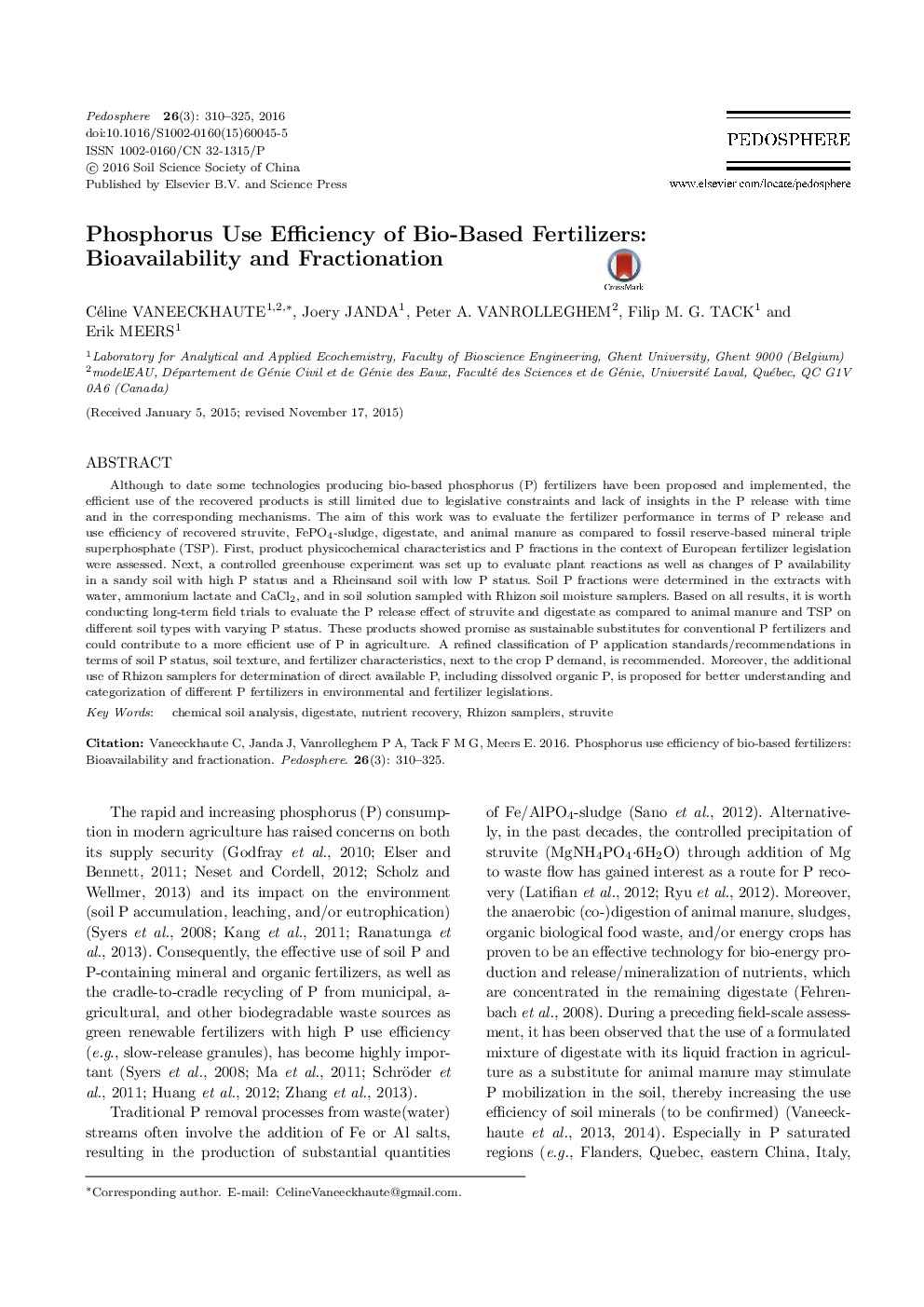| Article ID | Journal | Published Year | Pages | File Type |
|---|---|---|---|---|
| 4581142 | Pedosphere | 2016 | 16 Pages |
Although to date some technologies producing bio-based phosphorus (P) fertilizers have been proposed and implemented, the efficient use of the recovered products is still limited due to legislative constraints and lack of insights in the P release with time and in the corresponding mechanisms. The aim of this work was to evaluate the fertilizer performance in terms of P release and use efficiency of recovered struvite, FePO4-sludge, digestate, and animal manure as compared to fossil reserve-based mineral triple superphosphate (TSP). First, product physicochemical characteristics and P fractions in the context of European fertilizer legislation were assessed. Next, a controlled greenhouse experiment was set up to evaluate plant reactions as well as changes of P availability in a sandy soil with high P status and a Rheinsand soil with low P status. Soil P fractions were determined in the extracts with water, ammonium lactate and CaCl2, and in soil solution sampled with Rhizon soil moisture samplers. Based on all results, it is worth conducting long-term field trials to evaluate the P release effect of struvite and digestate as compared to animal manure and TSP on different soil types with varying P status. These products showed promise as sustainable substitutes for conventional P fertilizers and could contribute to a more efficient use of P in agriculture. A refined classification of P application standards/recommendations in terms of soil P status, soil texture, and fertilizer characteristics, next to the crop P demand, is recommended. Moreover, the additional use of Rhizon samplers for determination of direct available P, including dissolved organic P, is proposed for better understanding and categorization of different P fertilizers in environmental and fertilizer legislations.
